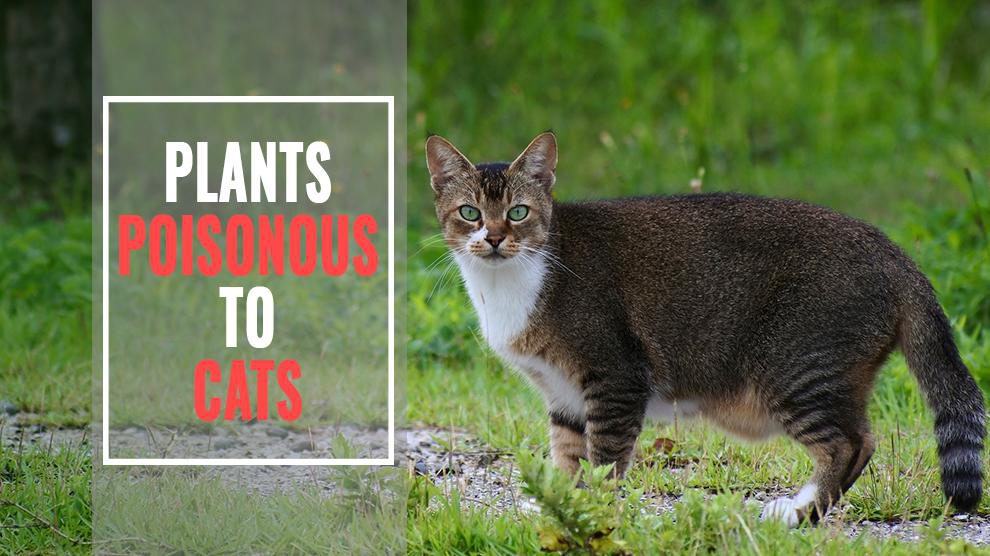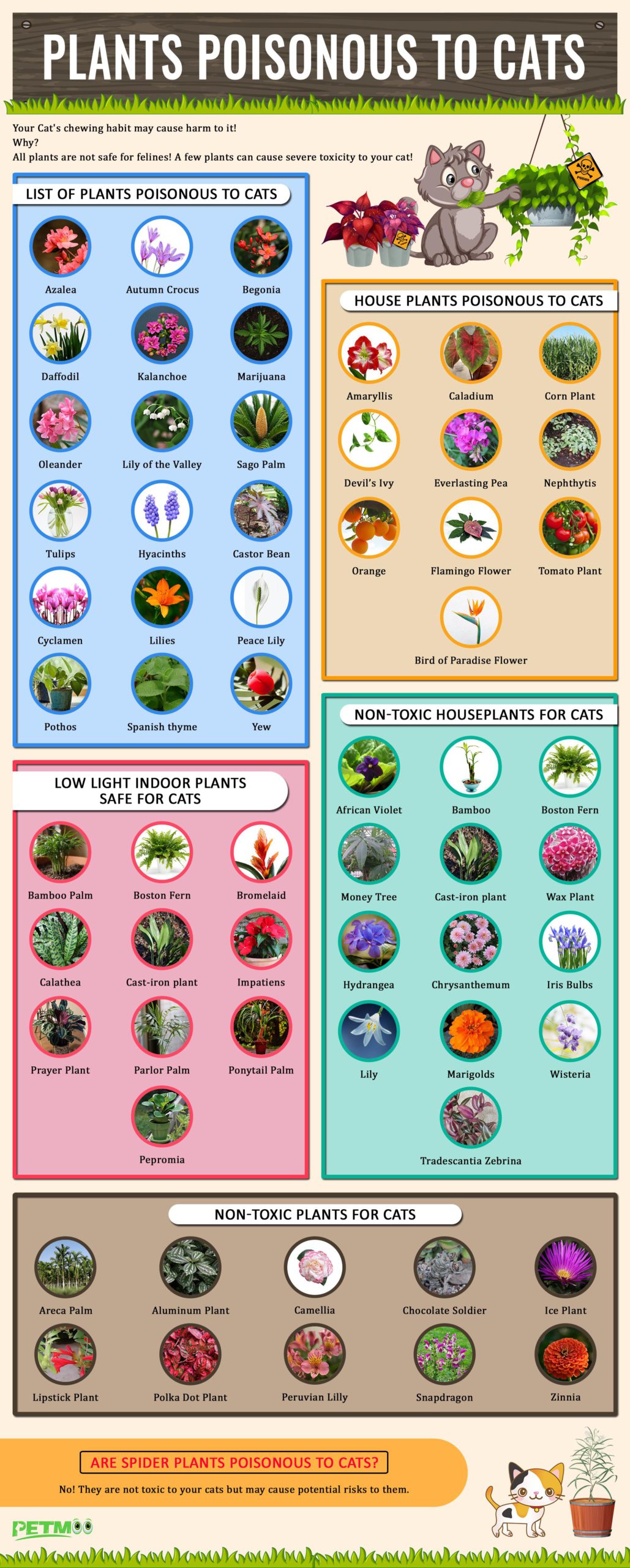Cat Pregnancy Calculator And Timeline
Is your cat an explorer? Then, you must keep an eye on it!
An explorer always wants adventures. So, no wonder your cat does! Cats have the natural habit of chewing plants and climbing trees. But, these habits may harm them as a list of toxic plants is right there!
So, it is vital to identify the toxic and non-toxic plants for your tabby and grow the safest plants when you have pets at your home! It is essential to remove the poisonous plants that you had already grown!
Generally, the pets will get inflammation in the skin, mouth, and stomach after ingesting a few leaves of a plant that won’t suit them! But, some plants and their parts will even lead your cat to death.
As not all the plants are poisonous, we will tell you the poisonous and safe plants for your cat!
List Of Plants Poisonous To Cats
A few plants are only considered highly toxic to your tabby. Here’s a list of those plants.
1. Azalea
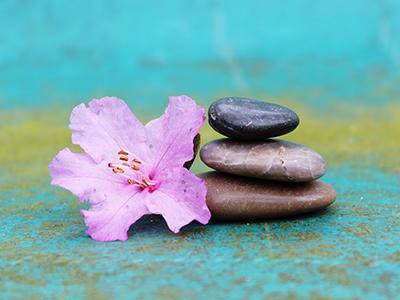
One of the most harmful plants can cause severe health impacts on pets, such as diarrhea, vomiting, and drooling.
2. Autumn Crocus
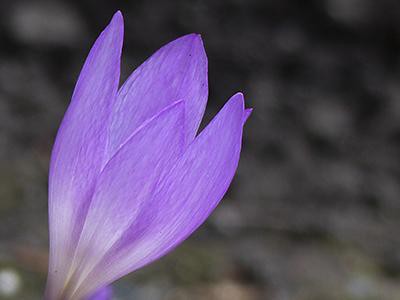
Here, we are talking about the species of this plant that blooms in autumn called “Colchicum autumnale.” A highly toxic plant, it causes gastrointestinal bleeding, vomiting, kidney and liver damage in cats.
3. Begonia
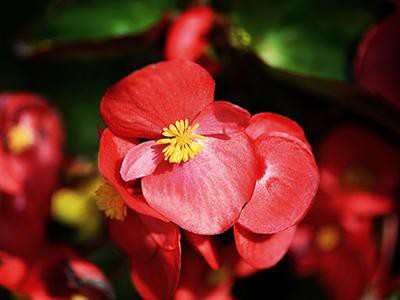
Tubers of this plant are poisonous to both cats and dogs. If your tabby ingests a few leaves of this plant, it will get oral irritation, severe burning, and irritation in the mouth, lips, tongue, and vomiting.
4. Daffodil
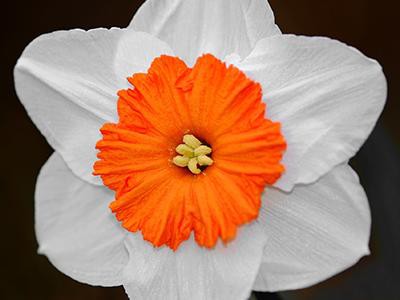
Almost all the parts of this flowering plant are harmful to your kittens. Lycorine, an alkaloid with strong emetic properties present in daffodils, will stimulate vomiting in cats.
If your cat ingests the bulb or the flower of this plant, it will cause diarrhea, vomiting, abdominal pain, and even cardiac arrhythmias or respiratory depression.
Also, crystals present in the outer layer of the bulbs will cause severe tissue irritation and drooling. So, immediate veterinary care is required if any ingestion of the plant is found in your tabby.
5. Kalanchoe
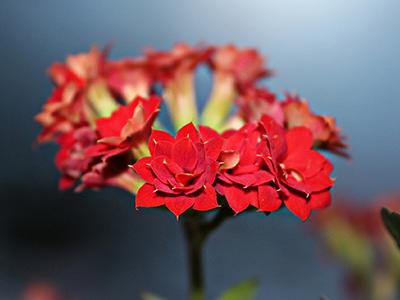
A succulent, Kalanchoe has high toxicity. It causes diarrhea, vomiting, and even heart arrhythmia.
6. Lilly of the Valley
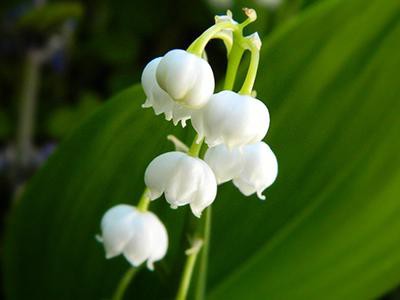
Glycosides in this plant can cause major effects such as a drop in heart rate, vomiting, diarrhea, and even seizures. If your cat ingested a few leaves of this plant, you should call the vet as soon as possible.
7. Marijuana
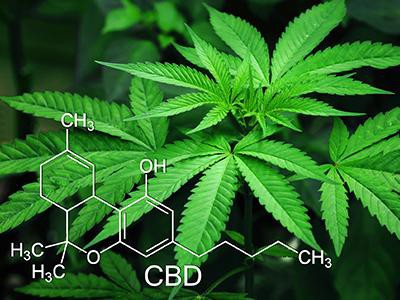
It is a deadly plant that causes depression in the central nervous system of your cat. This plant also leads your tabby to coma and seizures other than vomiting, diarrhea, and an increase in heart rate.
8. Oleander
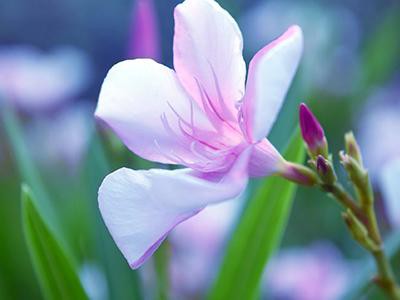
It is a shrub that is notable for its delicate flowers. But, its leaves and flowers are highly toxic and may even cause death. Upon ingestion, this plant causes vomiting and slows the heart rate as well.
9. Sago Palm
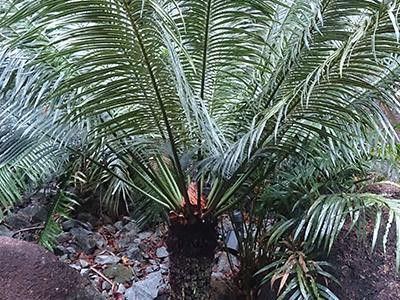
Yet another deadly and popular plant, Sago’s palm, causes much harm to your pet. If your cat ingests the leaves and seeds of this plant, it will cause vomiting, bloody stools, severe liver failure, damage to the stomach lining, and even death in a few cases.
10. Tulips and Hyacinths
Lactones present in tulips are allergic to cats. Only the bulbs of tulips are poisonous to cats. So, your tabby will get irritation in the mouth and esophagus and increase in heart rate.
Apart from these plants, other plants are also considered poisonous to cats.
- Castor Bean
- Cyclamen
- Lilies
- Peace Lily
- Pothos
- Spanish thyme
- Yew
List Of House Plants Poisonous To Cats
Your home may look heavenly with plenty of plants, but your cat may not!
House plants will easily grow, even inside your home. They are also easy to maintain. But, these plants may cause moderate to severe health effects on your tabby.
So, let’s have a look at those plants and their toxic effects on your tabby.
1. Amaryllis
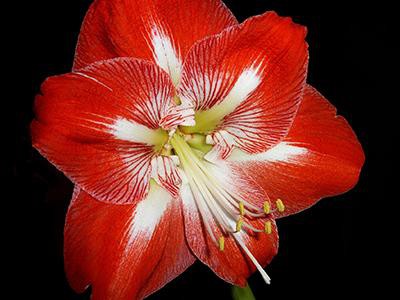
Also called “Naked lady,” this house plant is dangerous to both cats and dogs. The extreme effect of the ingestion of this plant is tremors.
If you look at the symptoms such as vomiting, diarrhea, abdominal pain, anorexia, and hypersalivation, call for immediate veterinary attention.
2. Bird Of Paradise Flower
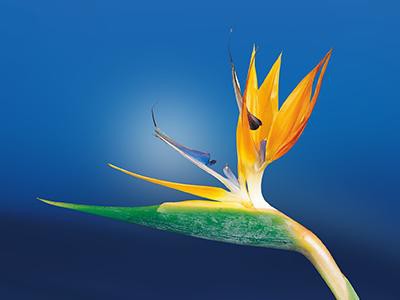
Popularly called “Crane flower,” this plant is harmful to cats and dogs, and horses. Fruits and seeds of this plant are more toxic to your cat, and it will cause drowsiness, vomiting, and mild nausea.
3. Caladium
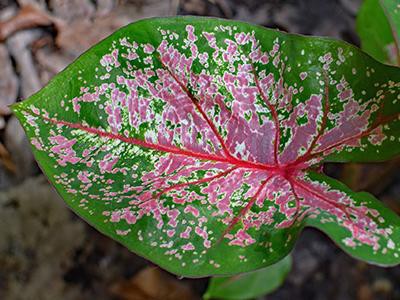
Also known as “The Elephant’s ears,” this plant is toxic to both cats and dogs. Your tabby will feel difficult to swallow the leaves.
It will also cause oral irritation, severe burning sensation in lips, tongue, mouth, and excessive vomiting.
4. Corn Plant
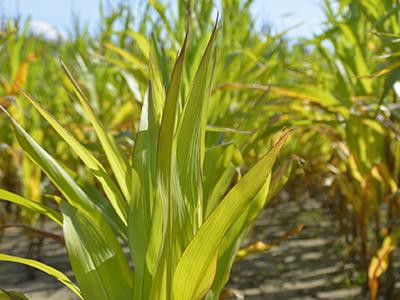
This plant is also called the Dragon tree. It contains Saponin, an offensive chemical compound, which is poisonous to cats and dogs as well.
After ingestion, you can notice the symptoms such as vomiting, loss of appetite, increased salivation, and depression in cats. The affected cats will have dilated pupils as well.
5. Devil’s Ivy
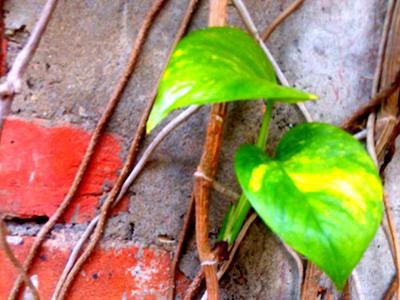
Yet another toxic houseplant to cats and dogs is the Devil’s Ivy. Difficulty swallowing, vomiting, excess drooling, burning sensation, and irritation in lips, tongue, and mouth are the symptoms you can notice after ingesting a few leaves of this plant.
6. Everlasting Pea
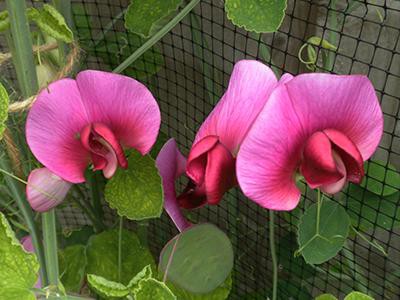
Sweet pea or everlasting pea is the most poisonous plant to pets, although having little, beautiful flowers. Your cat may die after ingesting a few leaves of this plant.
Lethargy, weakness, seizures, and even tremors can occur in your tabby after ingesting a few leaves of this plant.
7. Flamingo Flower
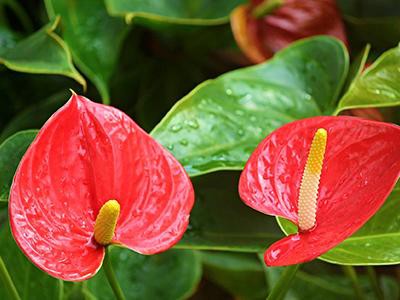
Although having beautiful flowers, it is poisonous to cats and dogs. It will cause oral irritation, severe burning sensation in lips, mouth, tongue, vomiting, and difficulty swallowing in cats.
8. Nephthytis
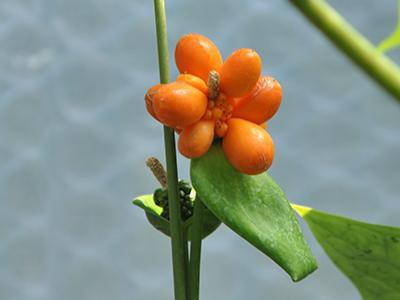
Arrowhead Vine, the other name of Nephthytis, is a poisonous plant to both cats and dogs. Your cat may feel oral irritation, severe burning sensation, vomiting, and difficulty swallowing.
9. Orange
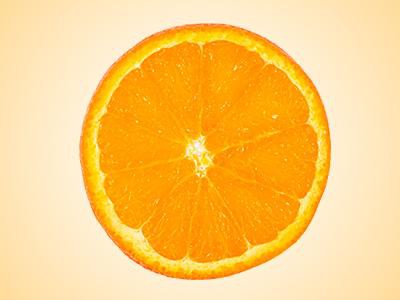
Notable for having the fibrous fruit, this plant is toxic to almost all pets. Vomiting, diarrhea, depression, and photosensitivity are common symptoms in cats after ingestion.
10. Tomato Plant
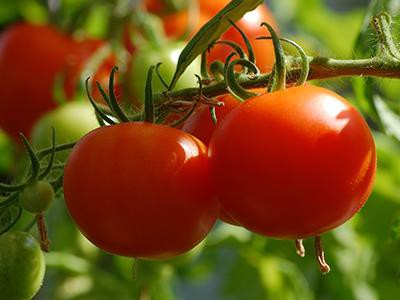
Having the tangy tomatoes, it is the most poisonous plant to cats and other pets as well. It can cause severe effects such as drowsiness, loss of appetite, diarrhea, hypersalivation, severe gastrointestinal upset, behavioral change, confusion, CNS depression, dilated pupils, and slow heart rate.
Non-Toxic Houseplants for Cats
A few plants are considered safe and for your pets. A shortlist of such plants for you! Not only having these non-toxic properties, but these plants are also the perfect air purifiers.
- African Violet
- Bamboo
- Boston Fern
- Cast Iron Plant
- Money Tree
- TradescantiaZebrina
- Wax Plant
You may also have a few plants in your garden or the backyard. But, they may also harm your kittens. So, be cautious of those plants and avoid planting them.
Below is a list of them.
- Chrysanthemum
- Hydrangea
- Iris Bulbs
- Lily
- Marigolds
- Wisteria
Low Light Indoor Plants Safe For Cats
If you want to grow pet-friendly plants inside your home, you can go for the below choices. These plants are not only non-toxic but also easily maintainable.
A few plants can be easily grown indoors. They are
- Bamboo Palm – A quickly growing, pet-safe, indoor plant, needs minimal time and energy.
- Boston fern – It is an air humidifier and a perfect plant to keep indoors. The better place to keep this plant under the air vents.
- Bromeliad – The colorful, beautiful, and pet-friendly indoor plant, it grows in minimal light. It is a common flowering house plant.
- Calathea – An attractive plant with pretty leaves in red, cream, and green colors, it quickly grows with less sunlight.
- Cast iron plant – It is a beautiful plant that thieves in any room of your home.
- Impatiens – A cheerful plant with great colors, is safe, easy to grow, and adaptable to low light conditions.
- Prayer Plant – It is a cute little plant that closes its leaves at night and will look like prayer hands. So, it is fun and straightforward to grow this plant.
- Parlor Palm – The easiest to grow plant is the Parlor Palm and suits beginners best. It will grow in the shade and grows well in room conditions.
- Ponytail Palm – A common and an excellent indoor plant, it is safe for cats and dogs. It can tolerate drought and can become large floor plants.
- Peperomia – It is a popular, quickly grown, attractive, and compact houseplant. This plant tolerates less light conditions, and you can place it as the centerpiece of a coffee table.
So, be happy with having a pet-friendly plant!
Are Spider Plants Poisonous To Cats?
No! They are not toxic to your cats but may cause potential risks to them. Spider Plants are the popular houseplants which you might have seen in hanging baskets. I Hope, you are admired for its scent!
But, have you ever noticed that the scent attracts your tabby, too? Do you think that is this the only reason for attraction?
Actually, no! Cats have a natural attraction to dangles. But, they like spider plants because of their mild hallucinogenic properties that are harmless to cats.
Although non-toxic, cats shouldn’t eat the leaves of this plant as opium-like chemical compounds in it may cause stomach upset, vomiting, and diarrhea in your tabby.
So, it is better to keep these plants away from the areas your cat usually climbs, such as furniture or windowsills.
If you’re not able to hang the plant anywhere at your home or feel it challenging to find a suitable location, spray the leaves with a repellant having a bitter taste. It will help them to avoid chewing the leaves of this plant.
If the spider plant has an abundant growth, prune the plants back or divide them. It is also a better idea to plant some indoor grass for your cat’s enjoyment.
But, if you find that your cat ate a spider plant too late, check for any behavioral changes in it and visit the vet if symptoms are severe.
Non-Toxic Plants For Cats
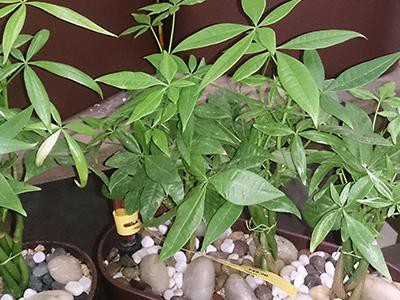
Although many of your favorite and elegant greeneries are considered poisonous, you can still make your home pleasant and keep your cat healthy.
If your kitten also nibbles on the leaves of these plants, you don’t need to worry! You can be stress-free, too!
So, here you go!
- Areca Palm – Also called “butterfly palm,” it is native to Madagascar and grows well in high humidity and warm temperatures. Requiring little light and water, it is the best air purifier!
- Aluminum Plant – An easy-to-maintain house plant, its gray-and-green leaves attract everyone!
- Camellia – Having the rich and glossy dark green leaves, it offers you beautiful rose-like flowers. This plant has a long life and needs moderate moisture.
- Chocolate Soldier – An easy growing house plant that is safe for pets. But, it is better to keep them away from cats.
- Ice Plant – It grows well in draining soil areas. This plant attracts you with its magenta-colored flowers and succulent leaves. You can plant it either at the rock walls or garden paths.
- Lipstick Plant – It is a peculiar pet-friendly plant, which resembles the tubes of lipstick. You can plant it outside during the summer!
- Polka Dot Plant – It is a perfect and versatile pet-safe plant! It is also available in colors such as pink and white.
- Peruvian Lilly – As many Lilly species are poisonous to cats, Peruvian Lilly is a non-toxic plant.
- Snapdragon – Growing in early spring and late fall, it also suits in cold weather! It requires full sunlight and rich soil.
- Zinnia – Buy the “Zahra series!” It will offer various colors monthly. This plant needs more space and sunlight.
Is Easter Lillies Poisonous To Cats?
If you own cats, you should be aware that no flowers are considered safe for them.
Yes! There is no doubt that Easter lilies are dangerous to cats even though they look cute and beautiful. They are even fatal to your tabby.
Why Are They Dangerous?
As per expert opinion, lilies present in the ‘daylily’ and ‘truelily’ families are bad for cats. The entire plant is hazardous for cats – the water, pollen, flowers, leaves, and stem.
If your cat chews even a small amount of pollen grains, flower petals, or leaves while brushing or grooming, it can cause kidney failure within 72 hours.
Isn’t it scary?
Although lily poisoning is a hazard to your tabby, don’t panic. If you believe your pet cat may have consumed a little Lilly, first notice the following signs of poisoning in it.
- Dehydration
- Loss of hunger
- Vomiting
- Drooling
- Lethargy
In case of severe symptoms in your tabby, talk to your vet at the earliest.
As you use decorative flowers during Easter celebrations, be mindful of what flowers that you use in the decoration.
Cats chew on anything and everything. So, it is advisable to remove lilies instantly from your home.

